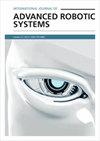使用自主多传感器移动机器人测试污染物羽流源定位算法的可配置仿真策略
IF 2.1
4区 计算机科学
Q2 Computer Science
International Journal of Advanced Robotic Systems
Pub Date : 2022-03-01
DOI:10.1177/17298806221081325
引用次数: 1
摘要
在涉及化学、生物、放射性和核污染物扩散的危险情况下,及时遏制排放至关重要。污染物以动态演变的羽流形式扩散到大气中,这给预测扩散轨迹和潜在的疏散地点带来了复杂的困难。污染物快速扩散的预测建模策略需要排放源的定位,这一任务通过无人驾驶移动传感平台有效地完成。由于传感器配置和寻源算法的巨大可能性,平台在实际应用中的部署包含了许多不确定性和机会。这项工作旨在开发一个羽流源探测模拟器,在实验现场测试之前,为地面移动传感平台配置提供可靠的寻源方法和性能测试。利用ROS、Gazebo、MATLAB和Simulink,为无人驾驶地面车辆开发了一个虚拟环境,该环境具有可配置的传感器阵列,能够测量映射到域的羽散模型数据。对于选定的配置,除了使用包含大气湍流影响的大涡模拟模型外,还使用高斯色散模型测试了基于梯度和自适应勘探算法的源定位。开发了一种独特的全局搜索算法,以确定真正的来源,总体成功,允许在现场实验中进一步评估。从模拟中获得的观测结果来看,很明显,通过设计全球探测算法,同时结合气象参数的测量,而不仅仅是浓度(例如风速和涡度),可以大大提高寻源性能,这是由于包含高分辨率大涡模拟羽流数据而成为可能的。本文章由计算机程序翻译,如有差异,请以英文原文为准。
Configurable simulation strategies for testing pollutant plume source localization algorithms using autonomous multisensor mobile robots
In hazardous situations involving the dispersion of chemical, biological, radiological, and nuclear pollutants, timely containment of the emission is critical. A contaminant disperses as a dynamically evolving plume into the atmosphere, introducing complex difficulties in predicting the dispersion trajectory and potential evacuation sites. Strategies for predictive modeling of rapid contaminant dispersion demand localization of the emission source, a task performed effectively via unmanned mobile-sensing platforms. With vast possibilities in sensor configurations and source-seeking algorithms, platform deployment in real-world applications involves much uncertainty alongside opportunity. This work aims to develop a plume source detection simulator to offer a reliable comparison of source-seeking approaches and performance testing of ground-based mobile-sensing platform configurations prior to experimental field testing. Utilizing ROS, Gazebo, MATLAB, and Simulink, a virtual environment is developed for an unmanned ground vehicle with a configurable array of sensors capable of measuring plume dispersion model data mapped into the domain. For selected configurations, gradient-based and adaptive exploration algorithms were tested for source localization using Gaussian dispersion models in addition to large eddy simulation models incorporating the effects of atmospheric turbulence. A unique global search algorithm was developed to locate the true source with overall success allowing for further evaluation in field experiments. From the observations obtained in simulation, it is evident that source-seeking performance can improve drastically by designing algorithms for global exploration while incorporating measurements of meteorological parameters beyond solely concentration (e.g. wind velocity and vorticity) made possible by the inclusion of high-resolution large eddy simulation plume data.
求助全文
通过发布文献求助,成功后即可免费获取论文全文。
去求助
来源期刊
CiteScore
6.50
自引率
0.00%
发文量
65
审稿时长
6 months
期刊介绍:
International Journal of Advanced Robotic Systems (IJARS) is a JCR ranked, peer-reviewed open access journal covering the full spectrum of robotics research. The journal is addressed to both practicing professionals and researchers in the field of robotics and its specialty areas. IJARS features fourteen topic areas each headed by a Topic Editor-in-Chief, integrating all aspects of research in robotics under the journal''s domain.

 求助内容:
求助内容: 应助结果提醒方式:
应助结果提醒方式:


